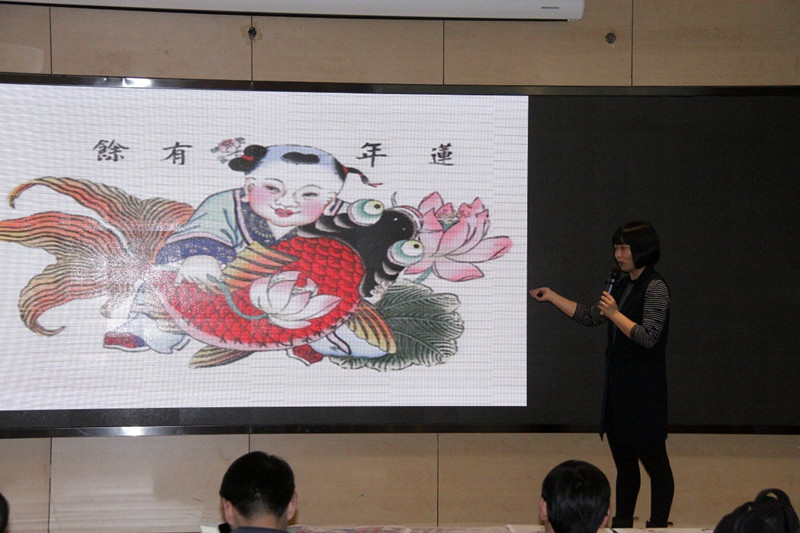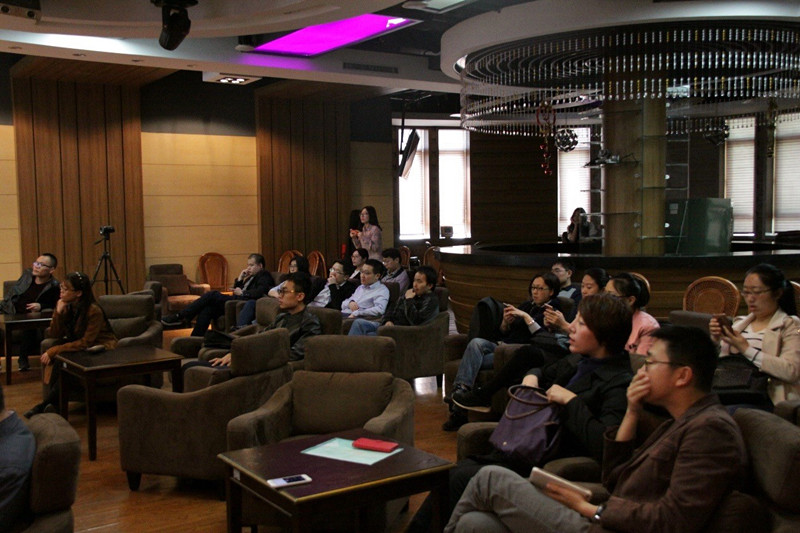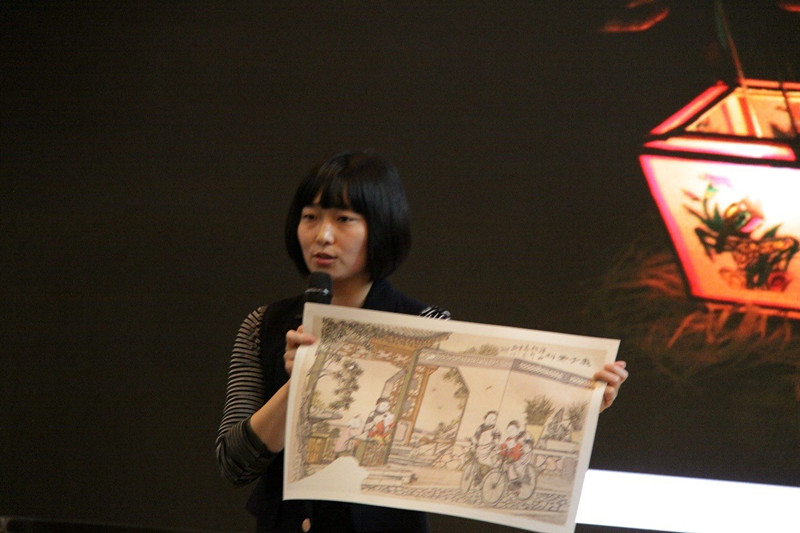Every ethnic group has its own culture and art, which are handed down from generation to generation and finally became national treasures. For ancient Chinese people, during Spring Festival, they were used to making and displaying New Year Pictures so as to pray for good luck and happiness. However, as time has passed, this folk art has gradually been phased out. Recently, scholars have realized the significance of saving and protecting this art form. Wang Kun the assistant professor at the Feng Jicai Research Institute of Literature and Art is one of these scholars. Recently, she shared her opinions and experiences of her protection work in a lecture on the Weijin Road campus of Tianjin University.

The theme of the lecture was “why New Year Picture’s are a leading example of folk art”. Due to the fast pace of city life, New Year Pictures, as a kind of handicraft, seems incompatible with society. That’s why New Year Pictures are more common in rural areas. “These are new year pictures we found in Shandong and Shaanxi province. They act as door-god paintings or window papercuts in people’s houses.” Wang started her lecture with some photos of New Year Pictures she had collected. The contents of New Year Pictures are mainly about beliefs and folk activities. Among a few existing New Year Pictures, the wood-block New Year Pictures are even rarer.

In the lecture, Wang paid attention to definition, history, contents and places of origin of the New Year Pictures. Although they can be traced back to as early as the pre-Qin period, they were formally named “New Year Pictures” in the late Qing dynasty. The New Year Pictures from the Jin dynasty are the earliest extant pictures and are preserved in the Hermitage Museum of Russia. When it came to the Ming and Qing dynasties, the New Year Picture took on an air of prosperity. Not only did they reach a higher artistic level, but they also spread into more people’s daily lives.

Since New Year Pictures are an example of folk culture, their contents are closely related to people’s life and reflect their spirit. Generally speaking, they are a way to tell stories or describe scenes, including historical stories, myths and legends, examples of social life, scenic spots and so on. “With bright colors, detailed painting and rich contents, we can even know how people in the Qing dynasty ate hotpot!” Wang said in delight. As mentioned above, the New Year Picture was popular throughout the whole country so that most provinces produced them. In some provinces, there was even a whole town producing New Year Pictures, with Yangliuqing in Tianjin being one example.

At the end of the lecture, Wang interpreted some New Year Pictures collected by the Feng Jicai Research Institute of Literature and Art on the spot and discussed the question “why are New Year Pictures a leading example of folk art” with the audience. On behalf of the Institute, she also gave audience members posters, postcards and sticky notes painted with New Year Pictures and expressed the wish that more people could realize their importance and protect them.
By: Zhao Han
Editors: Qin Mian and Christopher Peter Clarke






